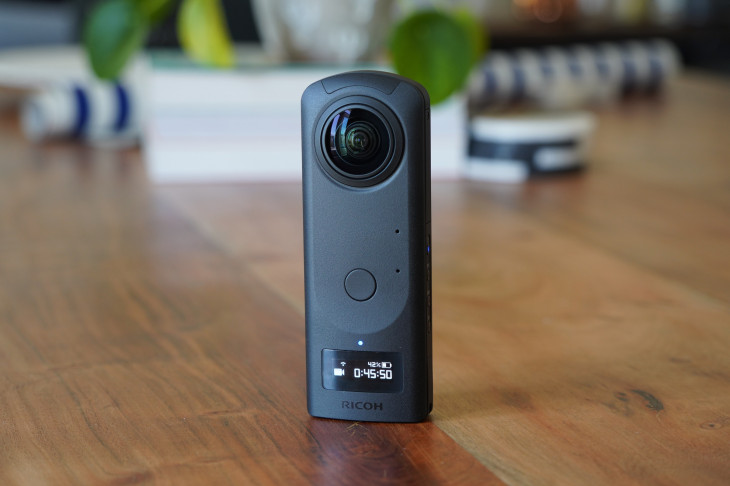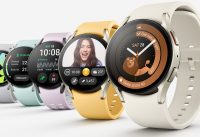Ricoh Theta Z1 Review: High Quality 360 Degree Camera

While there are still other uses for 360 degree cameras, virtual reality glasses for masses may have been stalled. Ricoh not only demonstrates that it remains a viable category, but also that a market exists for superior models. At $999, the Ricoh Theta Z1 is more than twice the cost of the other 360 camera. It offers larger photo sensors for better light photography, amongst other things. For most consumers, the premium price is a little too high.
Design
The Ricoh Theta Z1 basically looks like a bigger release of the older 360 including our favorite, the Insta360 One X. A large, slightly rounded top edge, Ricoh’s new camera sits on the opposite side of the top end.
On the lower part there is a black & white OLED display which displays information such as shooting mode, battery life. There is also a shutter button on the lower part. There are total four button. A Wi-Fi and Bluetooth button, shooting modes and the timer button, along one narrow side control power.
Design of this camera works for two different reasons. Without a stick, you can use the camera and your device slides into the pocket easily. The GoPro’s Max’s square shape does not allow these advantages. The camera is not waterproof, as with the GoPro Max. The magnesium body of the Z1 feels solid, although.
Image quality
In order to take much greater images in better quality than with other 360 cameras, the Theta Z1 has two CMOS sensors of 1 inch on the backside. Images still can be as big as 23 MP with resolution of 6720 x 3360 pixels. Videos being recorded at 4K with 3840x 1920 resolution at 30 fps.
Other cameras do not just depend on megapixels. The larger Z1 sensor size means that better images can be captured. It was most obvious in low light situations.
The Z1 stands out in good light. I was so amazed by the details in the pictures when I took some pictures outside the National Museum NY. Everything it captured was nicely detailed and saturated. The photograph of the Insta360, One X, was not almost so rich or colorful that chromatic errors were more evident.
I took a few photos in the lounge to really test the quality of the Z1 along with the Insta360 One X and GoPro Max at a hotel. Z1 did everything possible to capture the inside of the dimly lit lounge, although I would not describe its performance as great. It collected most of the details in the roof friezes and I could most clearly see the stars in the constellations in the roof wall. However, the windows were noticeably chromatic aberrated and the photo was generally very grainy.
Quality
I went to Avenue Park and took all of three cameras with me. The Z1 even caught the sounds of the gears and was extremely effective at removing the sound of wind. The video of GoPro Max was as effective, while wind noise hit Insta360 OneX.
In addition to stabilizing video, the Theta Z1 did a decent work but was not as powerful as cheap cameras. I put the camera on my cat’s back and had her pass through a field.
Almost all motions were eliminated and the horizon kept by camera was fairly high. The video was still a bit tangy. The GoPro Max and the Insta360 One X were similar videos that were much steadier.
Plug-ins
Because the operating systems of the Theta Z1 are based upon Android, developers from third parties can build plug-ins to add camera features. 42 plugins are available at the moment. Features like wireless camera live streaming and camera management with Alexa are included. You can even play a bird call with the camera before it takes a photo. You can thus receive an animal’s attention, so that when the shutter snaps it will look right at the camera.
Storage
The Theta Z1 has non-removable storage, unlike almost all the other camera I have been trying. You have to remove files on the camera to continue using them when you fill it up. The device offers storage of 19GB. The company claims that you can store 4K-quality video for approximately 40 minutes. I’ve had a 2minute 4 K clip of 950 MB in my experience.
Apps
You can view and upload files with the basic Z1 app for Android and iOS. You must download a second app called Theta+, which is also available for Android and iOS, if you wish to make significant changes. You can add backgrounds, filters.
One feature missing from Z1 is that you can edit a video to change the view automatically during playback in both the GoPro and the Insta360 applications. You can change the video from right or to the left.
Ricoh also has several laptop apps, including a Windows and Mac Movie Converters application, the Classic CC plugin from Adobe Photoshop, Windows and Mac basic photos only app and a File Transfer app. The Movie Converter applications and basic app do not allow you to edit photos or videos.
Final Verdict
Ricoh Theta Z1 takes better pictures than 360 other cameras. Where lighting is less than ideal for indoor images and videos, you will definitely need a larger Z1 sensors than other 360 cameras. Third party developers can build plug-ins for camera because all of the plug-ins are not available. $500 GoPro Max or $400 Insta360 OneX are better options for most consumers. They also produce vibrant photos and videos in good lighting conditions and make their apps and functionality more user-friendly.
Read Next: Insta360 Air 360 Degree Smartphone Camera – Hands On Review



